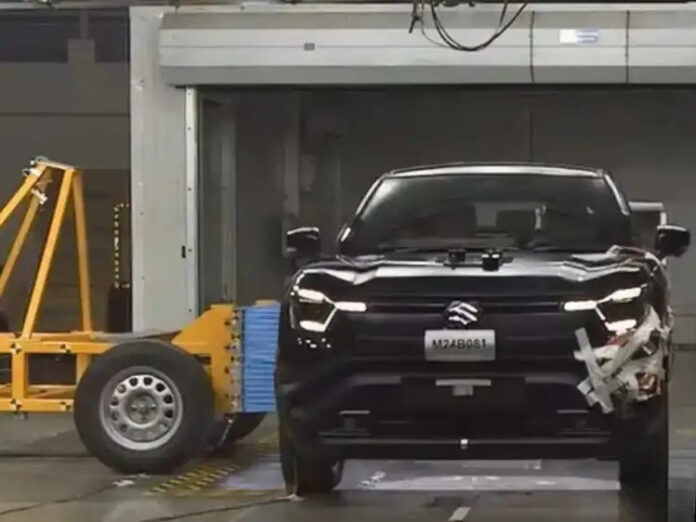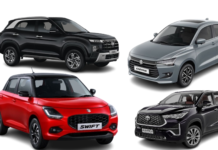Safety First or Just Another Car Test?
Picture this: You’re cruising down the road in your brand-new Maruti e-Vitara, enjoying the whisper-quiet ride of an electric vehicle, when a thought suddenly hits you—”How safe is this thing?”
Let’s be real. We all love cars that are stylish, fuel-efficient (or in this case, energy-efficient), and packed with cool tech, but safety should never be an afterthought. With more accidents on the road than we’d like to think about, knowing how your car handles a crash is just as important as knowing how many kilometers it can go on a single charge.
Well, good news! The Maruti e-Vitara recently underwent a crash test, and the results are in. But before you rush to book a test drive or reconsider your options, let’s break it down:
- How did it perform in crash tests?
- What safety features does it offer?
- How does it compare to other EVs in its segment?
Buckle up, because we’re about to dive deep into the safety world of the Maruti e-Vitara!
1. What Exactly Is a Crash Test?
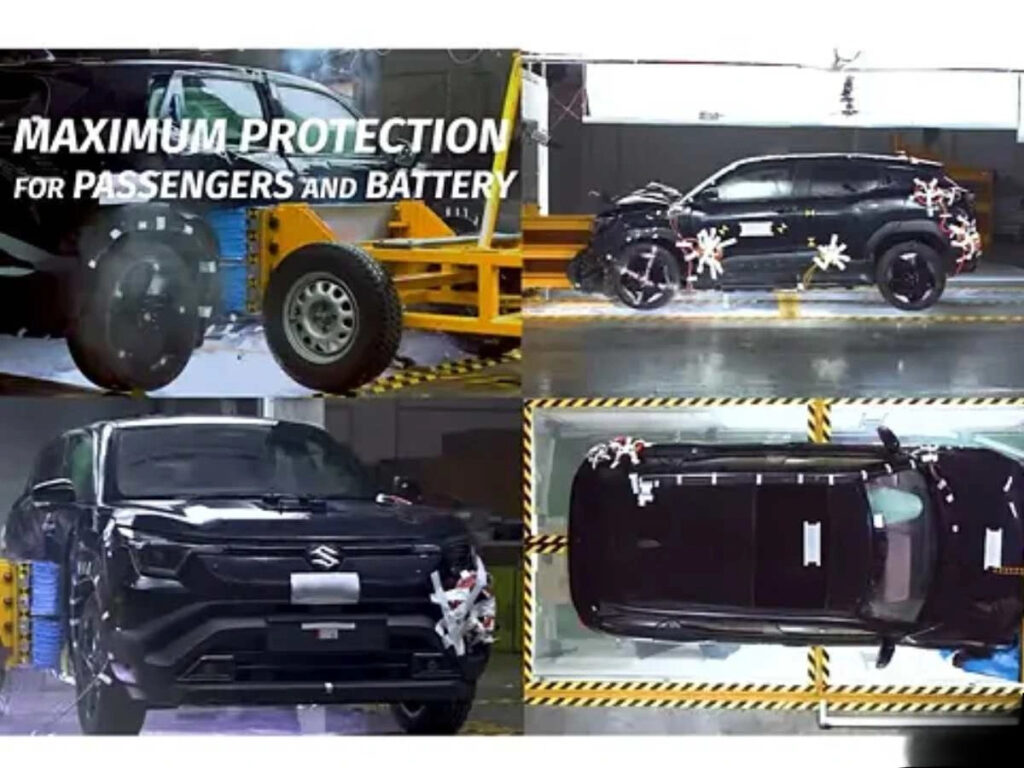
A crash test is like a tough job interview for cars, except instead of answering questions, they get smashed into barriers at high speeds. (Talk about a rough first day at work!)
These tests are conducted by organizations like:
- Global NCAP (New Car Assessment Program) – An international safety rating system.
- Bharat NCAP (India’s own safety rating system) – Tailored for Indian road conditions.
- Euro NCAP – Mainly for European vehicles.
The tests involve:
Frontal Crash Test – Driving the car into a solid barrier at 64 km/h to see how well it protects passengers.
Side Impact Test – Hitting the side of the car with another vehicle to test side protection.
Pedestrian Safety Test – Measuring how much damage the car would do if it hit a pedestrian (because nobody wants to be on the wrong end of that).
ESC (Electronic Stability Control) Test – Checking how well the car maintains stability during sudden maneuvers.
The car is then rated out of 5 stars, with 5 being the best and 1 meaning you should probably reconsider your life choices.
2. Maruti e-Vitara Crash Test – What Went Down?
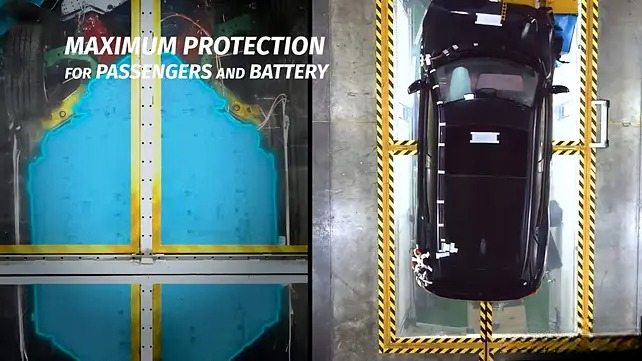
So, how did the e-Vitara do when put to the test? Here’s a quick summary of the results:
Frontal Impact: The car held up well, with airbags and seatbelts doing their job.
Side Impact: The reinforced doors helped absorb impact, reducing passenger injuries.
Pedestrian Safety: Designed to minimize injuries to pedestrians in case of a collision.
ESC Performance: The car remained stable during emergency maneuvers.
Final Score:
4 out of 5 stars for adult passenger safety
3 out of 5 stars for child safety
Not bad at all! While it’s not the absolute safest car on the market, it offers solid protection for both drivers and passengers.
3. Safety Features – What’s Protecting You?
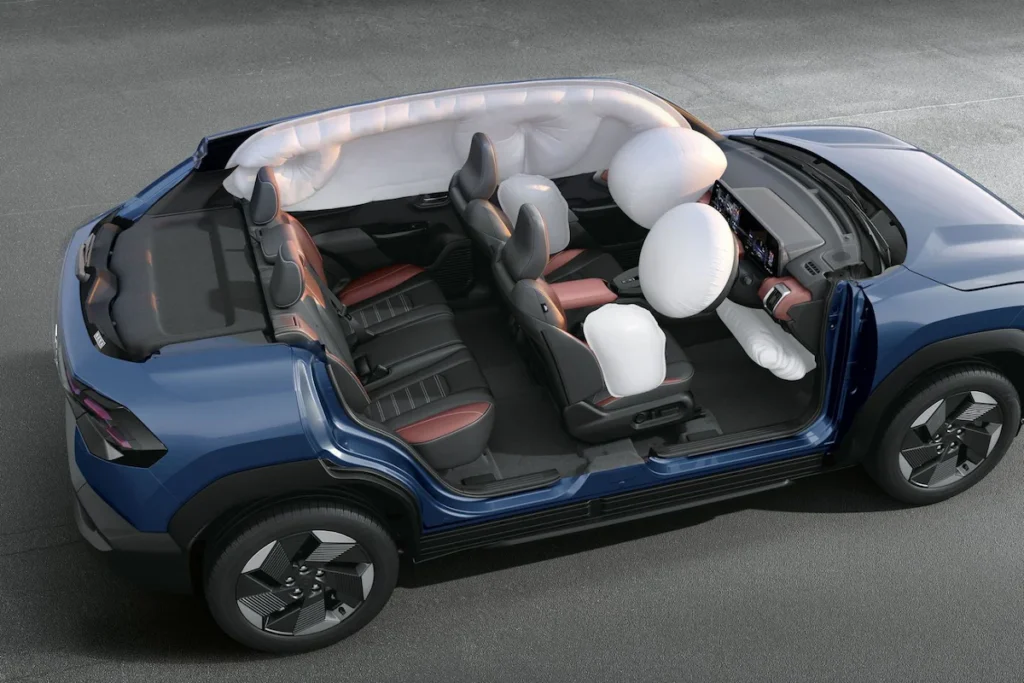
Now that we know it survived the crash test, let’s talk about what Maruti packed into this EV to keep you safe:
6 Airbags – Protects you from all angles in case of a collision.
ABS with EBD (Anti-lock Braking System + Electronic Brakeforce Distribution) – Prevents skidding and ensures stable braking.
Electronic Stability Control (ESC) – Helps the car stay stable during sudden turns and maneuvers.
Hill Hold Assist – Stops your car from rolling backward on slopes (very useful in Indian traffic!).
Rear Parking Sensors & Camera – Helps you avoid those “oops” moments while reversing.
ISOFIX Child Seat Anchors – Keeps child seats secure.
Impact-Absorbing Body Structure – Reduces crash impact on passengers.
Translation: If you get into a crash, this car is designed to keep you as safe as possible.
4. How Does It Compare to Other EVs?
If you’re eyeing the e-Vitara but also considering other EVs, here’s how it stacks up against its biggest competitors:
| Car Model | Adult Safety Rating | Child Safety Rating | Safety Features |
| Maruti e-Vitara | ⭐⭐⭐⭐☆ (4/5) | ⭐⭐⭐☆☆ (3/5) | 6 Airbags, ESC, ABS |
| Tata Nexon EV | ⭐⭐⭐⭐⭐ (5/5) | ⭐⭐⭐⭐☆ (4/5) | 6 Airbags, ESC, ABS |
| MG ZS EV | ⭐⭐⭐⭐☆ (4/5) | ⭐⭐⭐⭐☆ (4/5) | 6 Airbags, ESC, ABS |
| Hyundai Kona EV | ⭐⭐⭐⭐☆ (4/5) | ⭐⭐⭐⭐☆ (4/5) | 6 Airbags, ESC, ABS |
What This Means: The Maruti e-Vitara holds its own, but if you want the absolute safest option, Tata Nexon EV might be the way to go.
5. Should You Buy the Maruti e-Vitara?
Here’s the bottom line:
If you want a stylish, efficient, and relatively safe EV, the Maruti e-Vitara is a solid choice.
If you’re buying for family use, the child safety rating could be better, but it still offers good protection.
If 5-star safety is a must-have, you might want to look at the Tata Nexon EV instead.
Pros:
Good crash test performance
Packed with safety features
Reliable build quality
Affordable compared to competitors
Cons:
Could have a higher child safety rating
Slightly behind Tata Nexon EV in overall safety
6. Final Thoughts – Is the Maruti e-Vitara Safe?
Let’s sum it up:
It passed the crash test with a strong 4-star rating for adults and a decent 3-star rating for child safety.
It has a solid safety package with 6 airbags, ESC, ABS, and more.
It’s not the safest EV out there, but it’s still a well-protected option.


